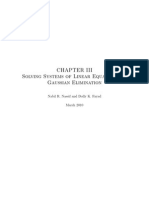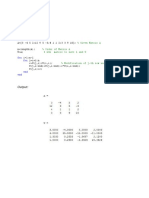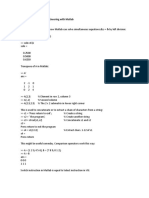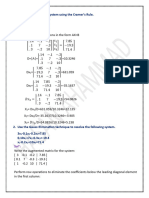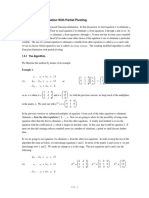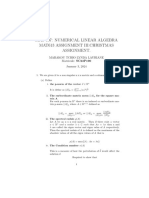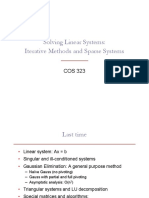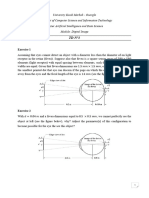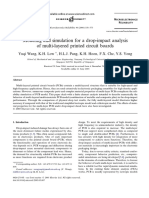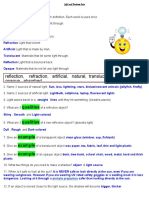0% found this document useful (0 votes)
83 views10 pagesAdvance Theory of Structures: 1. Reference 2. Syllabus
This document provides an introduction to advanced matrix structural analysis. It begins with basic matrix operations such as addition, subtraction, multiplication and division. It then describes the Cholesky decomposition procedure which involves decomposing a symmetric positive definite matrix A into the product of a lower triangular matrix L and its transpose. This allows solving systems of simultaneous linear equations efficiently. The document also discusses using block operations to reduce memory requirements when solving large systems with band matrix techniques.
Uploaded by
john ed villasisCopyright
© © All Rights Reserved
We take content rights seriously. If you suspect this is your content, claim it here.
Available Formats
Download as DOCX, PDF, TXT or read online on Scribd
0% found this document useful (0 votes)
83 views10 pagesAdvance Theory of Structures: 1. Reference 2. Syllabus
This document provides an introduction to advanced matrix structural analysis. It begins with basic matrix operations such as addition, subtraction, multiplication and division. It then describes the Cholesky decomposition procedure which involves decomposing a symmetric positive definite matrix A into the product of a lower triangular matrix L and its transpose. This allows solving systems of simultaneous linear equations efficiently. The document also discusses using block operations to reduce memory requirements when solving large systems with band matrix techniques.
Uploaded by
john ed villasisCopyright
© © All Rights Reserved
We take content rights seriously. If you suspect this is your content, claim it here.
Available Formats
Download as DOCX, PDF, TXT or read online on Scribd
/ 10





